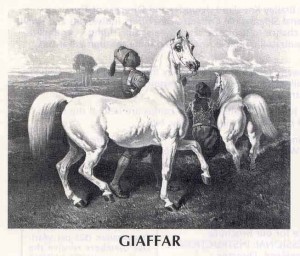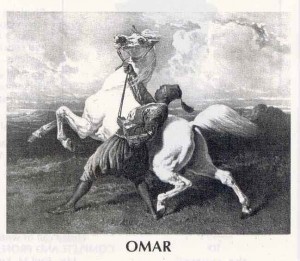Identify the past for the future.
Breeding Arabian horses has been such a probing aspect of my life. Over the years I’ve tapped into the fascinating lives of many past breeders, but two, namely Abbas Pasha and Ali Pasha Sherif affected me deeply. Without these two breeders it’s unlikely that the hundreds of thousands of Arabian horse lovers around the world would own and love the Arabian horse as we know him today.
Abbas Pasha and Ali Pasha Sherif possessed a relentless vision to preserve the characteristics, the primal type, the genuine model that embodied the Arabian horse. Knowing the history of these two men, I knew, I couldn’t resist bringing them into the final novel Winds of Time of my Daughters of the Wind series.
When I read about these breeders I faced their fears and daydreamed of places which existed only in my imagination. I became swept away by the drama, the heartbreak, excitement, thrills, their fears, the sheer romance of the time and place and eventually felt despair at their deaths. I escaped from my daily life and transferred some of the mystery, the sadness and their uplifting achievements from my mind to paper to share these secret realms with others.
As I mention in Ripples in Time an introduction contained in Winds of Time, Arabian horse lovers must remain indebted to Abbas Pasha and Ali Pasha Sherif for their dedication and foresight. We owe these men such a huge debt of gratitude.
These days for me writing about the Arabian breed and reminding people why they became involved with this extraordinary horse in the first place has taken precedence over breeding. How it all happened I don’t know but writing is no longer just something I do, it’s now a part of who I am and defines the person I’ve become.
Below are some thought provoking excerpts from Asil-Arabians II – The Noble Arabian Horses identifying the past for the future.
The importance of the Abbas Pasha Stud can hardly be overestimated in the history of the Arabian horse. First, the purity of the stock he obtained was without doubt authentic … So anxious was he (the viceroy) to preserve their type that he engaged Bedouins from Arabian of high birth and position, capable not only of watching over and directing the management of his stud on strictly Bedouin lines, but also of checking the accounts of genealogies, and so of precluding and chance of error. Greely from Asil-Arabians II – The Noble Arabian Horses.
For centuries there have been experts far-sighted enough and willing to make sacrifices, who time and time again brought back from the Nejd Arabian steeds of the noblest blood, in order to preserve and guard this original source of blood. These merits will never be forgotten, and the following names stand as examples for all of them: Abbas Pasha, Prince Muhammad Ali, and Ali Pasha Sherif. The produce of their studs enjoy the highest esteem in the international breed of Arabian horses and have lost nothing of their prepotency, their power of improving other breeds, giving them more hardiness, refinement and beauty. Bilke from Asil-Arabians II – The Noble Arabian Horses.
Who ever would succeed in the breeding of Arab horses must divest himself of much prejudice and accept as the basis of his policy the view of horse breeding held from time immorial in Arabia. According to this the Kehailan (purebred Arabian) is the one noble horse of the world. he is also the one perfect horse which may indeed become degenerate by the violation of the traditional rules of breeding. It should therefore be a cardinal principle that the object is to preserve in its perfection, not to improve the breed. Wilfrid S. Blunt


Leave a Reply